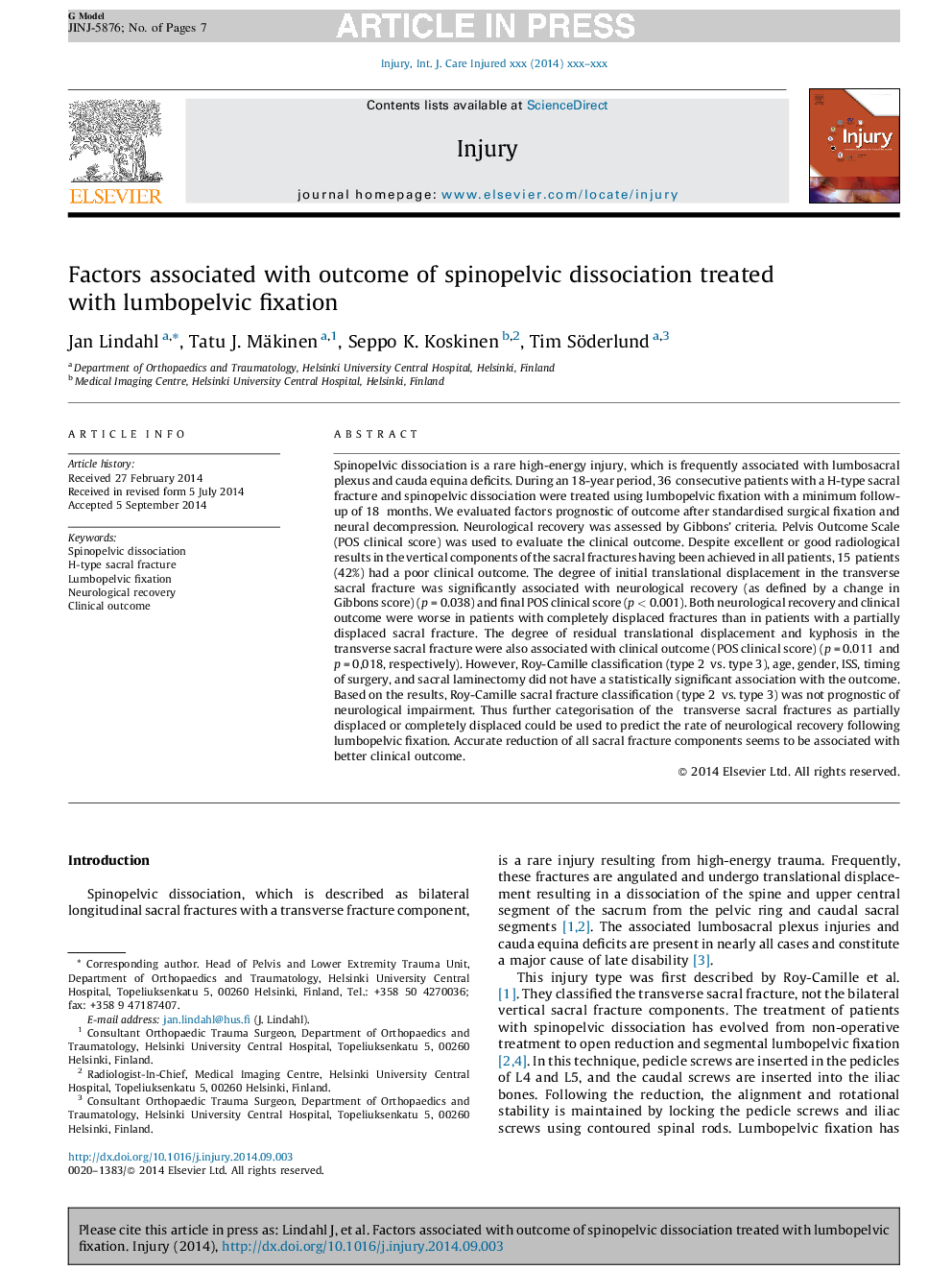| کد مقاله | کد نشریه | سال انتشار | مقاله انگلیسی | نسخه تمام متن |
|---|---|---|---|---|
| 6083699 | 1206004 | 2014 | 7 صفحه PDF | دانلود رایگان |
عنوان انگلیسی مقاله ISI
Factors associated with outcome of spinopelvic dissociation treated with lumbopelvic fixation
ترجمه فارسی عنوان
عوامل مرتبط با نتیجه جدا شدن اسپینوپالوویک با استفاده از تثبیت لومبوالوویک
دانلود مقاله + سفارش ترجمه
دانلود مقاله ISI انگلیسی
رایگان برای ایرانیان
کلمات کلیدی
موضوعات مرتبط
علوم پزشکی و سلامت
پزشکی و دندانپزشکی
طب اورژانس
چکیده انگلیسی
Spinopelvic dissociation is a rare high-energy injury, which is frequently associated with lumbosacral plexus and cauda equina deficits. During an 18-year period, 36 consecutive patients with a H-type sacral fracture and spinopelvic dissociation were treated using lumbopelvic fixation with a minimum follow-up of 18 months. We evaluated factors prognostic of outcome after standardised surgical fixation and neural decompression. Neurological recovery was assessed by Gibbons' criteria. Pelvis Outcome Scale (POS clinical score) was used to evaluate the clinical outcome. Despite excellent or good radiological results in the vertical components of the sacral fractures having been achieved in all patients, 15 patients (42%) had a poor clinical outcome. The degree of initial translational displacement in the transverse sacral fracture was significantly associated with neurological recovery (as defined by a change in Gibbons score) (p = 0.038) and final POS clinical score (p < 0.001). Both neurological recovery and clinical outcome were worse in patients with completely displaced fractures than in patients with a partially displaced sacral fracture. The degree of residual translational displacement and kyphosis in the transverse sacral fracture were also associated with clinical outcome (POS clinical score) (p = 0.011 and p = 0,018, respectively). However, Roy-Camille classification (type 2 vs. type 3), age, gender, ISS, timing of surgery, and sacral laminectomy did not have a statistically significant association with the outcome. Based on the results, Roy-Camille sacral fracture classification (type 2 vs. type 3) was not prognostic of neurological impairment. Thus further categorisation of the transverse sacral fractures as partially displaced or completely displaced could be used to predict the rate of neurological recovery following lumbopelvic fixation. Accurate reduction of all sacral fracture components seems to be associated with better clinical outcome.
ناشر
Database: Elsevier - ScienceDirect (ساینس دایرکت)
Journal: Injury - Volume 45, Issue 12, December 2014, Pages 1914-1920
Journal: Injury - Volume 45, Issue 12, December 2014, Pages 1914-1920
نویسندگان
Jan Lindahl, Tatu J. Mäkinen, Seppo K. Koskinen, Tim Söderlund,
